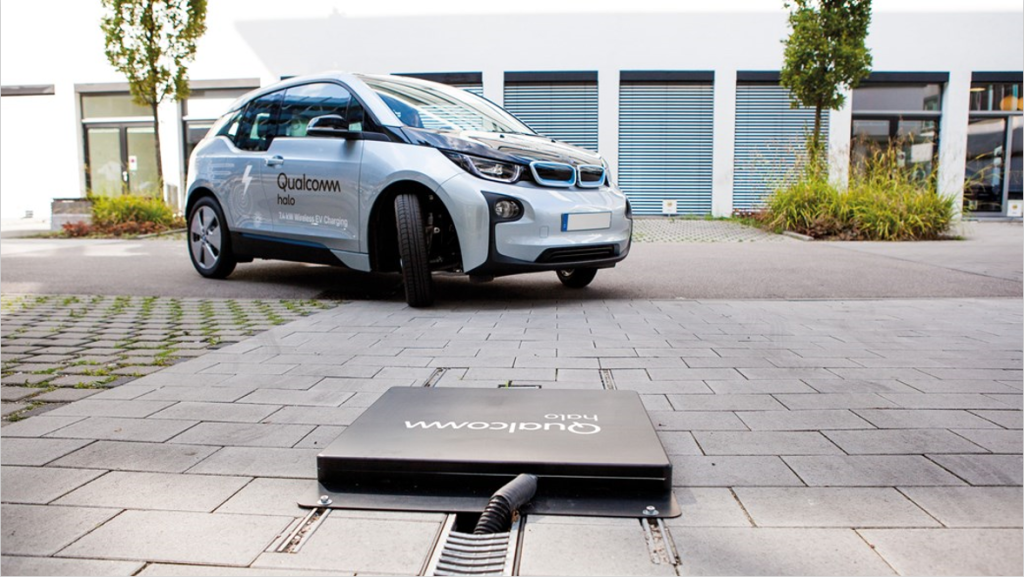6.2. Inductive wireless charging
Explore wireless charging for electric vehicles, with case studies on taxi trials and a groundbreaking road project in Sweden.
Inductive (or wireless) charging uses an electromagnetic field to transfer energy between a charging pad and an electric vehicle (EV) through electromagnetic induction. These systems can be retrofitted into older EVs.
Charging efficiency depends on the air-gap distance and the alignment quality between the vehicle and the charging pad itself. Inductive charging efficiency is around 90-95%, which is marginally lower than contact chargers (95-97%), but newer technology is narrowing this margin (Fontana et al., 2020).
Inductive charging may support the transition of any part of your fleet to electric. It might be suitable for vehicles that frequently stop for short periods in the same locations, allowing drivers to top up the charge without leaving their vehicles.
Although it’s an expensive option, several organisations have installed infrastructure that is ‘inductive charging ready’ and are seeing the benefits. Once this technology becomes more widespread, it may become more economically viable. Charging infrastructure can be switched over to this new technology relatively quickly, so it might be worth futureproofing your infrastructure in this way.
A similar new technology being explored is inductive charging-enabled roads. This technology is still at an early stage but, if it becomes more established, electric vehicles will need to have charging pads installed underneath to take advantage of it.
Benefits of inductive charging
- Greater convenience: no need for a cable and so no need to plug-in.
- Greater accessibility: equal ease of use for people with disabilities.
- Little and often charging is well-suited to buses, taxis, and last mile delivery.

Case studies
-
The city of Nottingham was awarded a £3.4 million grant to trial wireless car charging for taxis, with induction pads fitted at Nottingham railway station.
Previously, the movement of taxis up the rank prevented conventional plug-in charging. Switching to wireless charging allowed taxis to charge while maintaining their position on the rank.
A private pilot began in the summer of 2021. This featured induction charging technology from Lumen Freedom, supporting charging rates of 11 kW. The public demonstration, involving nine retrofitted vehicles (five LEVC TX black cabs and four Nissan Dynamo e-NV200s) began in August 2022.
-
Smartroad Gotland is a 1.6km stretch of electric inductive charging-capable road outside Visby on Gotland that allows vehicles to charge while moving. The project is run by a consortium led by ElectReon AB, who are also conducting a few other catenary technology trials.
Electric inductive charging via road has the advantage of cutting battery size requirements and, as a result, vehicle weight. This makes vehicles more efficient. This could be effective in improving the range of long-haul vehicles, which are currently limited by battery capacity.
Installation was completed in December 2020 and the project concluded in September 2023 with excellent results.